Featherstone Lodge
Houses within 15km of this house
Displaying 53 houses.
Houses within 15km of Featherstone Lodge
Displaying 53 houses.
| House name | Description | |
|---|---|---|
| Marble Hill | Marble Hill was built in the 1770s. It was enlarged as the family fortunes increased in the 19th century and was valued at £55 at the time of Griffith's Valuation. In 1906 it was held by Sir Henry G. Burke and was valued at £55. It was burned in the early 1920s. It is now a ruin with the remains of a substantial stable block to the rear. In 2005 it was for sale. |

|
| Dalystown/Dalyston | Built for the Daly family in the mid-18th century it later became the seat of Charles O'Farrell. In 1906 it was valued at £50. It was stripped of its fittings in the early 1960s and is now a ruin. Crossbaun burial ground (M664116), located nearby, contains the mausoleum of Denis and Charlotte Bowes Daly. |
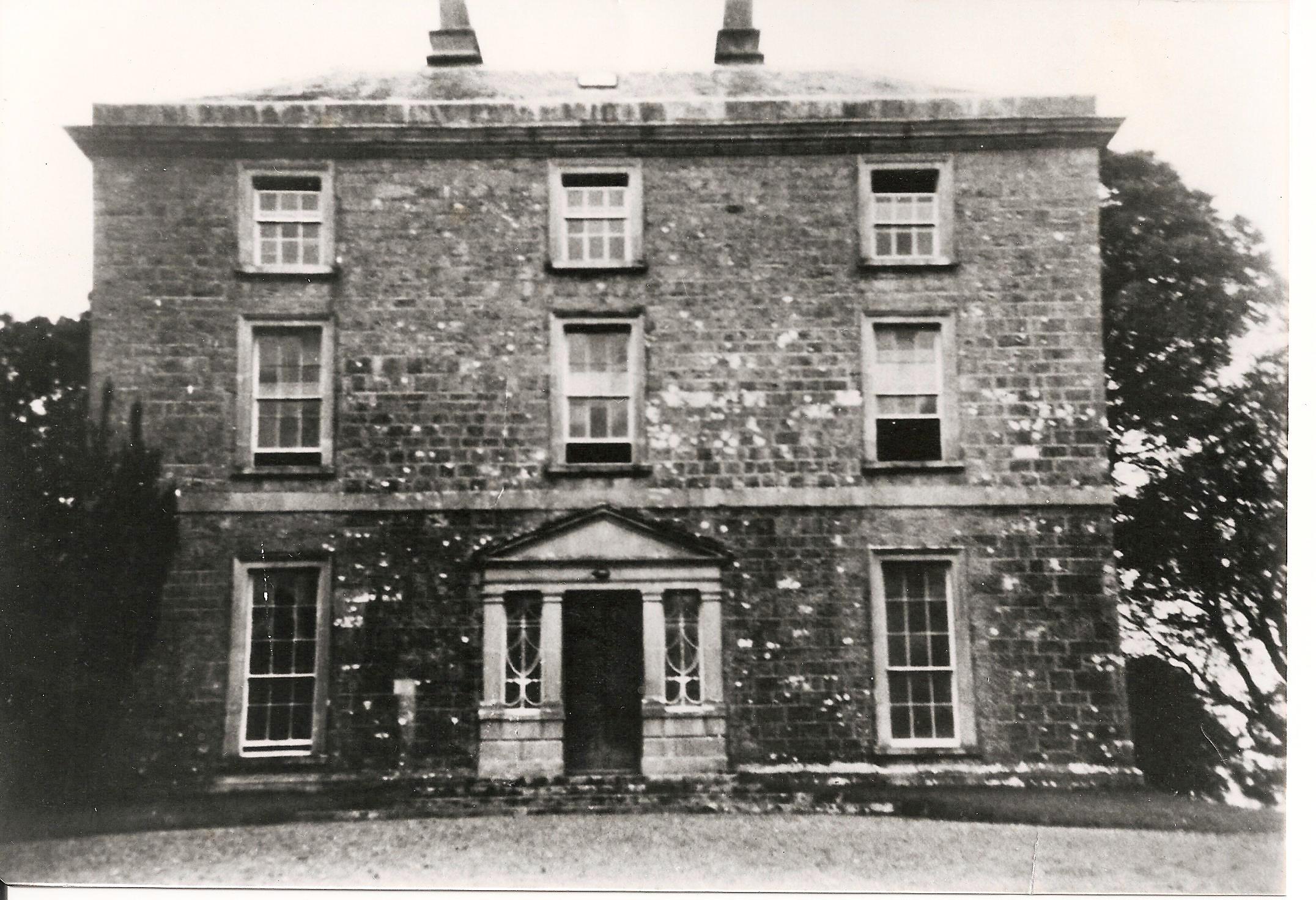
|
| Carrowkeel | James U. Burke was leasing the house at Carrowkeel from Charles Farrell at the time of Griffith's Valuation when it was valued at £9. In the 1830s the Ordnance Survey Name Books mention "a good dwelling and ornamental grounds" in the townland of Carrowkeel. It is still extant and occupied. |
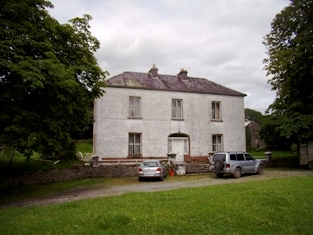
|
| Pallas | Pallas was the largest of the Nugent properties in the parish of Tynagh, which also included Spring Garden, Flower Hill and Crannagh, a property that had been used in the eighteenth century. A mansion was built at Pallas for Anthony Nugent, 4th Lord Riverston, in 1797. Slater, in 1846, refers to the Hon. Anthony Nugent residing at "The Palace". At the time of Griffith's Valuation it was the property of Anthony Nugent and was valued at £46. In 1906 it was owned by the Earl of Westmeath and was valued at £52. It was demolished after World War II. A well-preserved tower house and the remains of a large 17th century residence can also be seen at Pallas. |

|
| Tintrim | Up to 1898 this house was in the barony of Leitrim, county Galway. It is now in the barony of Tulla Upper, county Clare. At the time of Griffith's Valuation, John A. Burke was occuping the house valued at £11, at Tintrim, parish of Clonrush, barony of Leitrim, county Galway. Weir states that the house at Tintrim was probably built by John Anthony Burke of Clondegoff Castle nearby. He was most likely a member of the Burke family who lived at Meelick House, Whitegate at the same time. Tintrim continued in the possession of the Burke family as John Anthony Burke moved out to allow his son, Edmund, and his family to live there until the house was sold in 1867. The house later passed to the Madden family and is still extant and occupied. The Irish Tourist Association file records state that John A. Burke died in 1857 though the family history suggests he died in 1863. The Tourist Association file also notes that in 1933 there was a search for the heirs of his reputed son, Martin Edward Burke, in Australia. |

|
| Spring Garden | Spring Garden was a Nugent house in the parish of Tynagh, valued at £10 at the time of Griffith's Valuation. It had earlier belonged to the Persses but had been sold by them in the early 1850s. In 1906 this was the property of Hon. Richard A. Nugent. It is described as "in ruins" on the 25-inch Ordnance Survey map of the 1890s. | |
| Derrywillan House | A gate lodge and caretaker's house belonging to this estate were located in the townland of Redpark while the main house was in the townland of Tynagh. In 1837 Lewis records Derrywilliam House as the seat of H. Kilkelly. Taylor and Skinner record Dirry as the seat of the French family in 1783. | |
| Duniry A | Patrick Kennedy was leasing houses and other buildings valued at £8 from Peter Blake at Duniry at the time of Griffith's Valuation. A farm still exists at the site. | |
| Springvale | The OS Name Books mention the existence of Springvale House in the townland of Lisheenagat together with some plantation and ornamental ground. At the time of Griffith's Valuation, Francis Lynch was occupying a property at Lisheennagat, barony of Leitrim, valued at £9. In 1906 this property was owned by Michael Lynch. The original house is not extant though some estate buildings remain. | |
| Shannon Hill (Derryvunlam) | Edward Matthews occupied Shannon Hill House at Derryvunlum, barony of Leitrim, at the time of Griffith's Valuation when it was valued at £18. In 1906 the house at Derryvunlam, known as Shannon Hill, was still valued at £18 and still in the hands of Edward Matthews. There is still an extant house at the site. |
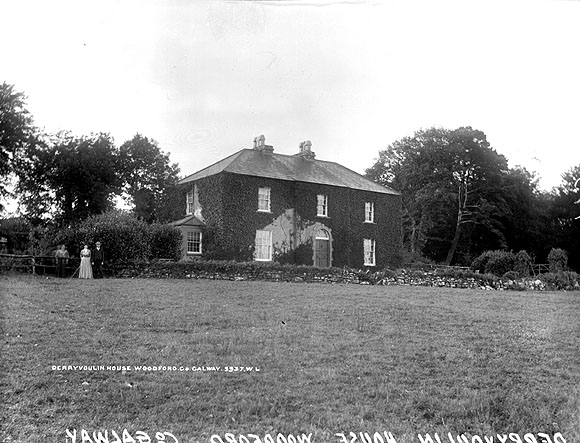
|
| Ballynagar/Ballinagar | Lewis records Ballynagar as the seat of A. Nugent in 1837. . At the time of Griffith's Valuation it was the property of John Aylward and was valued at £10 but the estate is recorded as in Chancery. In 1894 it was the seat of John Lewis and the Lewis family continued to reside at Ballynagar until the 1920s. Ballynagar is still extand and occupied. |

|
| Meelick | Weir states that Meelick was a Burke house in the seventeenth century when Burkes, originally from Clondegoff Castle, in the barony of Longford, settled here. At the time of Griffith's Valuation Walter Blake was occupying the house at Meelick, parish of Clonrush, barony of Leitrim, valued at £17. In 1814 this property was the residence of Matthew Yelverton. The OS Name Books record Meelick as the home of Mr. Gilbertson. Lewis recorded it as "uninhabited" in 1837. There is still an occupied house at Meelick. The Irish Tourist Association file for the parish of Clonrush refers to Meelick as a substantial house with a concrete roof, ancestral home of the Burkes. |

|
| Drummaan | Drummaan House is described as "in ruins" on the 1st edition of the Ordnance Survey. The ruins have disappeared by the later 25-inch map of the 1890s. This townland is now located in county Clare. | |
| Knockbrack | At the time of Griffith's Valuation, Joshua Seward was leasing a house valued at almost £10 at Drummaan East, barony of Leitrim. Since 1898 this house has been located in county Clare. This seems to be the house shown on the 1st edition OS map as Knockbrack. A house valued at £14 at Drummaan East, county Clare, was owned by Maj. Gen. Spencer Cooper in 1906. | |
| Gweeneeny | John Sheehy was occupying a property valued at £8 at Gweeneeny, barony of Leitrim, county Galway at the time of Griffith's Valuation. This property has been located in county Clare since 1898. | |
| Woodpark (Woodpark Lodge) | Phillip Read was occupying Woodpark, parish of Inishcaltra, valued at £28, at the time of Griffiths Valuation. It was also recorded as his seat by Lewis in 1837. The OS Name Books record the existence of Woodpark House in Woodpark townland, "the residence of counsellor Reid". The house later passed by marriage to the Hibbert family. In 1894 Slater refers to it as the seat of Robert Fiennes Hibbert. In 1906 the house was valued at £69, the property of Flora J. Hibbert. It was destroyed by fire in June 1921. The site of this house is now located in county Clare. | |
| Mountshannon | This house was located in county Galway until 1898. Weir states that the original house at Mountshannon was a single-storey building which was enlarged to two storeys in the nineteenth century. At the time of Griffith's Valuation it was occupied by Mary Tandy and was valued at £12. In 1906 it was the property of James Wakely and was valued at £17. The house was damaged by fire in June 1921. It later came into the possession of the Talbots of Malahaide who presented it to An Óige (IYHA) for use as a youth hostel in 1956. It was offered for sale in 2007. |
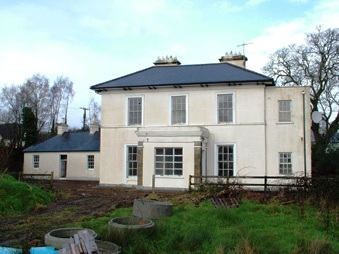
|
| Killeen House (Portumna) | Killeen House was the birthplace of Mary Anne Kelly, otherwise known as Eva of the Nation. The house was the property of her father Edward Kelly. In 1837 Lewis recorded it as the seat of E. Kelly. At the time of Griffith's Valuation it was valued at £18. Extensive corn mills are shown at the site on the First Edition Ordnance map. Killeen House is still extant. |
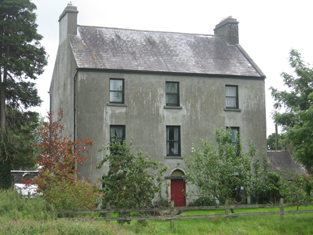
|
| Burke's Court | In 1846, Slater refers to Mrs. Bedelia Burke, resident at Clondagoff. At the time of Griffith's Valuation, Garrett Burke was leasing a house valued at £7 at Cloondadauv, parish of Ballinakill, barony of Leitrim, from the Clanricarde estate. The house is labelled Burke's Court on both the 1st and 25-inch edition Ordnance Survey maps. A house still exists at the site. An ancient Burke castle is also sited in this townland. |
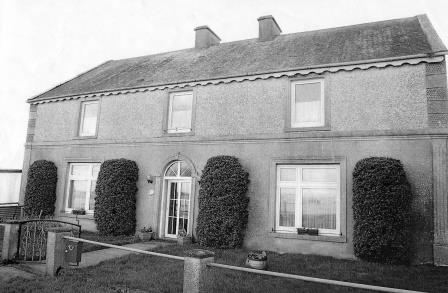
|
| Oghilly | At the time of Griffith's Valuation, Michael Page was leasing a house at Oghilly, parish of Ballynakill, barony of Leitrim, county Galway from the Clanricarde estate. It was valued at £9. The National Inventory of Architectural Heritage suggests that this house dates from the 1770s. It is still extant and occupied. |

|
| Danesfort House (Ballynakill) | Jethro Hemsworth was occupying the house, valued at £10, at Gortnakilla, in the 1850s. He was leasing from Henry Brunskill. There is still an extant house at the site. | |
| Silverstream House | At the time of Griffith's Valuation John Shaughnessy was leasing a property valued at £5 from the estate of John Aylward, which was the subject of chancery proceeding. A building still exists at the site. | |
| Ballycorban | In 1856 Matthew White was leasing a house valued at £10 at Ballycorban, in the parish of Ballynakill, barony of Leitrim, county Galway from the Burke of Marble Hill estate. Ballycorban is still extant and occupied. |

|
| Carrowroe Lodge | Sir Thomas Burke's estate held a house valued at £8 at Carrowroe in the parish of Ballynakill, barony of Leitrim, in 1856. Lewis records Carrowroe Lodge as the residence of H. Clarke in 1837. It was the property of Sir Henry Burke in 1906 when it was valued at just over £8. This house is still extant and occupied though it has been modernised. |

|
| Clonco House (Burke's Court) | Edward Burke was occupying this house valued at £8 at the time of Griffith's Valuation. In 1837 Lewis recorded it as the seat of Ulick Burke. On both the 1st and 25-inch edition Ordnance Survey maps, this house is labelled Burke's Court. In 1906 it was owned by John K. Burke and was valued at £7. The original entrance gates, showing Cloncoe House, are still extant and there is still a house at this site. |

|
| Curragh | At the time of Griffith's Valuation, Thomas Davy was leasing a house, valued at £11, at Curragh, parish of Ballynakill from the Burke of Marble Hill estate. There is still a house at Curragh and some of the adjoining land is now a golf course. |

|
| Eagle Hill | Eagle Hill was leased from Andrew Martin by Henry Pigott at the time of Griffith's Valuation when it was valued at £20. In 1837 Lewis recorded Eagle Hill as the seat of Capt. H. Pigot. It was recorded as the residence of A.P. Martin in 1814. In 1906 Anne Martin was the owner when the buildings were valued at almost £16. It is still extant and occupied. |
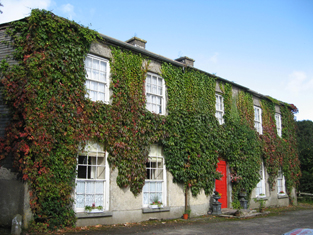
|
| Williamstown Hotel | Joshua Seward was leasing a building valued at £7 to the City of Dublin Steam Packet company at Drummaan East, barony of Leitrim, county Galway, at the time of Griffith's Valuation. This building functioned as the Williamstown Hotel. The original hotel building is no longer extant but the stable block remains and is used as a house. Following 1898 boundary revisions this property is now located in county Clare. |
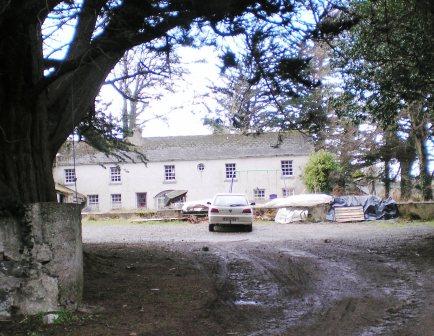
|
| Williamstadt House | Previously the residence of the Brady family, Williamstadt passed to Dr.Francis Sampson through marriage in 1833. At the time of Griffith's Valuation it was valued at £10 and Sampson was leasing it from James Egan. Up to 1898 this house would have been in county Galway. The house is still extant and occupied. |
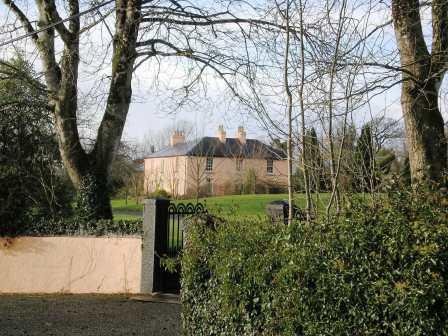
|
| Moyglass | Lewis records Moyglass as the seat of J. Burke in 1837. It was occupied by Andrew O'Hare at the time of Griffith's Valuation. In 1906 it was the property of the representatives of James Haig and was valued at £8. Buildings are still extant at the site. | |
| Cartron House (Ballynakill) | On the first-edition Ordance Survey map this building is labelled "police barracks" but is shown on the 25-inch map of hte 1890s as Cartron House. At the time of Griffith's Valuation it was still a police barracks and valued at over £12, when it was part of the estate of Sir Thomas Burke of Marble Hill. Madden states that evictions on this estate had resulted in buildings in the area being attacked. Cartron House is still extant and occupied. |

|
| Nutgrove | Taylor and Skinner record Nutgrove as a seat of the Donnellan family in 1783 and Wilson refers to it as the seat of Mr. Donnellan in 1786. At the time of Griffith's Valuation Anthony Nugent was leasing a property at Nutgrove or Feebrack, valued at £3 to Thomas Breheny. The site is now occupied by farm buildings. | |
| Lime Hill | Patrick Egan was leasing property valued at £13 including a mill and over 100 acres, at Limehill, barony of Leitrim, county Galway, at the time of Griffith's Valuation. This was part of the Clancarty estate. The house is labelled Limehill House on the 25-inch Ordnance Survey map of the 1890s. It is still extant. |
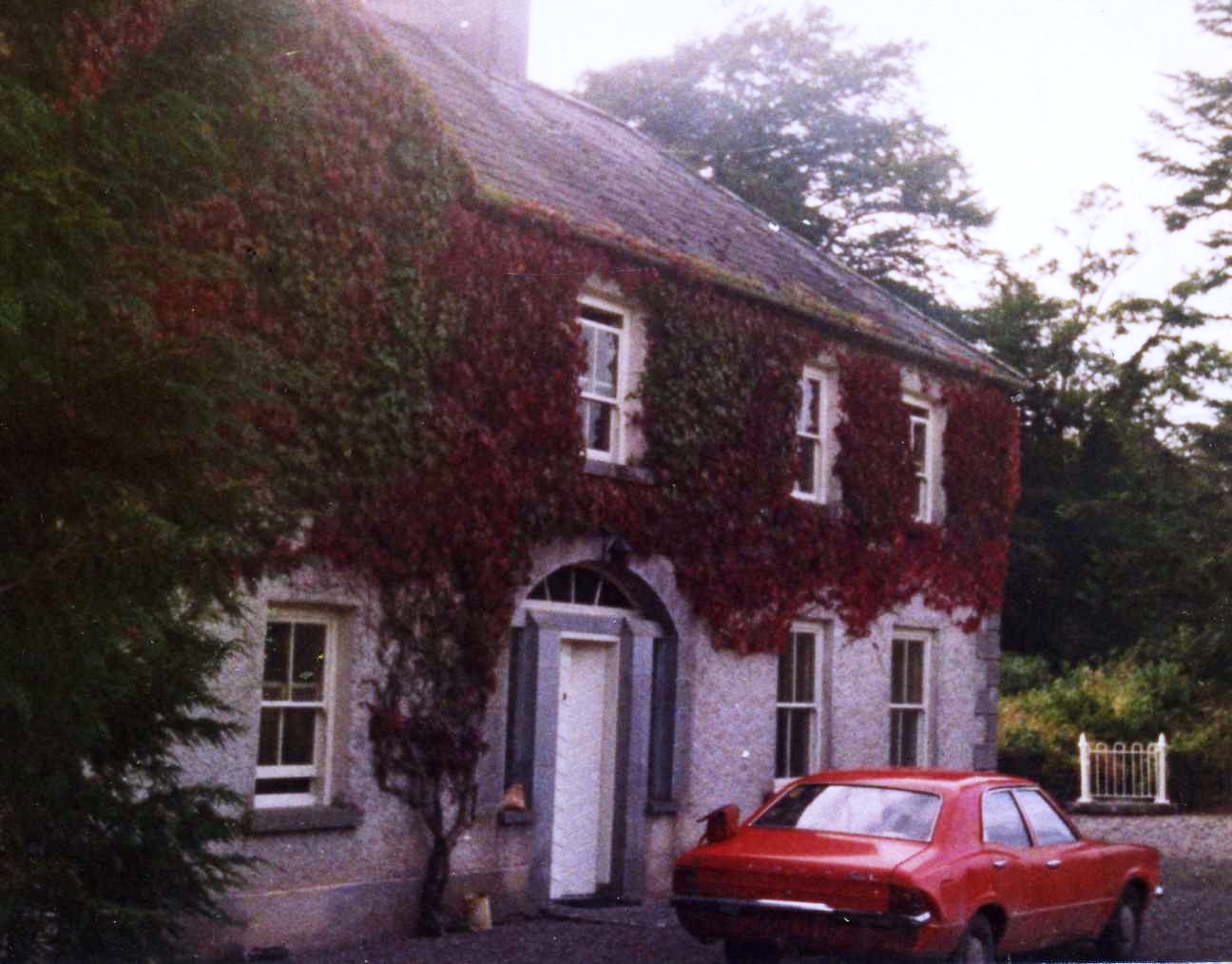
|
| Cartron (Duniry) | In 1906 Lawrence Egan owned a property valued at £5 at Cartron, barony of Leitrim, county Galway. Patrick Egan had held almost 200 acres here at the time of Griffith's Valuation but the buildings valuation at that time was less than £1. A house still occupies the site. | |
| Edward's Lodge | The 1st edition OS map shows a house called Edward's Lodge, at Derrylahan, barony of Leitrim, county Galway. This appears to be the property, valued at over £1, leased by the Aylward estate to Patrick Mohan at the time of Griffith's Valuation. There are not buildings at the site now and the area is heavily forested. | |
| Moneenroe/Drummaan House | At the time of Griffith's Valuation Anthony Holland was leasing a property valued at £6 from James Egan, at Drummaan East, barony of Leitrim, county Galway. This seems to correspond to the property labelled Moneenroe on the 1st edition OS map. Other members of the Holland family were leasing lands from Egan in the same townland. On the 25-inch Ordnance Survey map of the 1890s this house is labelled Drummaan, the previous house of that name having disappeared. There is still an extant house at this site which is now located in county Clare. | |
| Ballyargadaun | In 1906 Charles O'Farrell was the owner of a house valued at £4 at Ballyargadaun, barony of Leitrim, county Galway. This may be the gatelodge at the entrance to the Dalystown demesne or may be buildings associated with the plant nursery in the same townland. {Grid Reference is for gate lodge] | |
| Kylebrack | In 1906 Lord Clonbrock's estate held a property valued at £3 at Kylebrack West, barony of Leitrim, county Galway as well as over 100 acres of untenanted land. At the time of Griffith's Valuation, the townland was leased to tenants and this property appears to have been occupied by Michael Coleman. | |
| Knockadrum | The Burke estate owned a house at Knockadrum, barony of Leitrim at the time of Griffith's Valuation, which was leased to Reverend Lawrence Egan and was valued at £6. In 1906 the buildings at this site were still part of the Burke estate and were valued at over £12. | |
| Knockbeha Cottage | A house situated on the Molony estate at the time of Griffith's Valuation. occupied by John McArthur and valued at £16. Weir writes that it was used as a shooting lodge and an R.I.C. barracks. A modern house has been erected on the site. Another house is also marked on the first Ordnance Survey map 1842 at R575 910. | |
| Moynoe | In the early 18th century the Ringrose family lived at Moynoe. It is probable that Sir John Reade built the late 18th century house. He was the occupier in 1814 and Fitzgibbon Hinchy was living in the house in 1837. The house was unoccupied at the time of Griffith's Valuation, Thomas Wadson was the immediate lessor. The Sampson family lived in it for the remainder of the 19th century and well into the 20th century. Edward MacLysaght surveyed the papers of Miss Mary Sampson of Moynoe circa 1944. Bought by the present owners in the mid 20th century, the house was demolished in 1998. see http://www.esatclear.ie/~moynoe/Page_16x.htm/ |
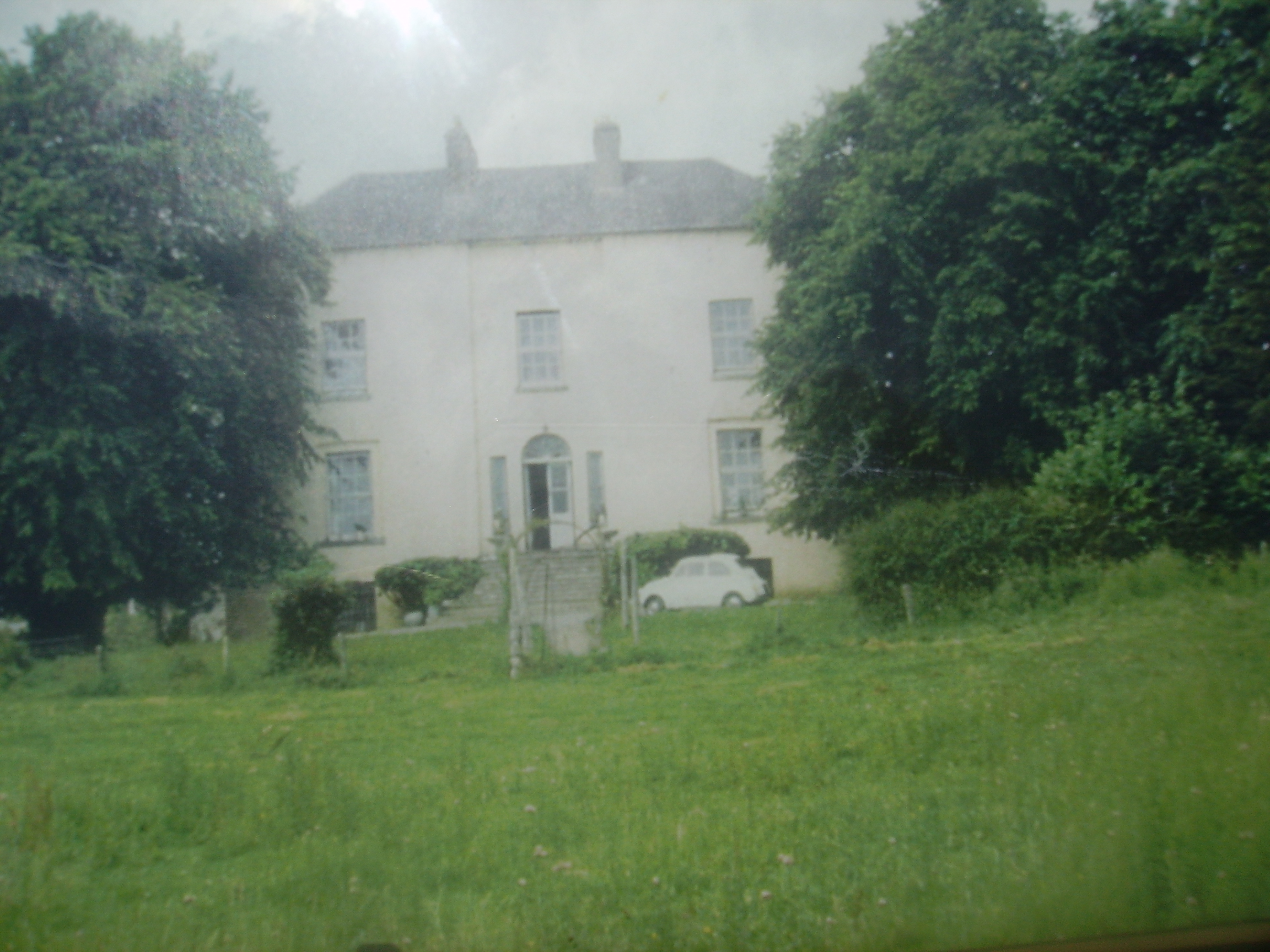
|
| Cloonusker | On the first Ordnance Survey map Cloonusker house is marked "in ruins". However by the time of Griffith's Valuation Henry Sparling was occupying a steward's house, which he held from Lord Norbury. The buildings were valued at £8. | |
| Castle Biggs/Drominagh | The Smythe sale rental of July 1870 states that the original lease (1711) was from Godfrey Boate and Benjamin Friend to William Biggs. Built by the Biggs family on the shore of Lough Derg this house was occupied by William L. Biggs in 1814 and by Dr W. Biggs in 1837. In 1840 the Ordnance Survey Name Books refer to Castle Biggs as "a most commodious house". Edward Biggs was resident in the mid 19th century, holding the property from Sir John Power. The house was valued at £22. The sale rental of November 1853 describes this "3-storey mansion containing every necessity and a range of out offices". It was in the possession of Edward Biggs, the owner, and was bought by Captain William Tuthill. William Tuthill sold the property to Frederick Smythe in 1859. It was for sale again in July 1870. At this time the Esmondes of county Wexford bought it from Frederick Smythe. In the early 1940s owned by Owen Esmonde but purchased by the Moss family in the 1940s. It is still extant. |
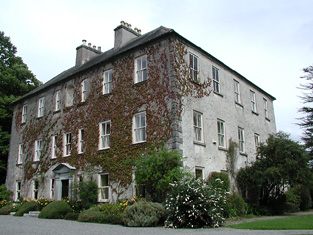
|
| Castletown | ''Burke's Irish Family Records'' states that Castletown was purchased by Thomas Sadleir of Sopwell Hall from the family of his brother-in-law, John Briggs of Castletown, in 1706. It passed to Charles, the second son of Thomas Sadleir and was in the possession of his descendants for four generations. In 1747 it was leased to the Cambies by Charles Sadlier. Wilson mentions it as a Parker seat in 1786. In 1814 Leet records the house as unoccupied. C. Cambie was the occupier when Castletown was described by Lewis as a “a handsome castellated building”. Charles Cambie held Castletown from Thomas Sadlier at the time of Griffith's Valuation when the house was valued at £23. Castletown was sold in the Encumbered Estates Court in 1856, Miss Sarah Cambie was the tenant. Thomas Towers of Bushy Park, Borrisokane was the petitioner. He was married to Elizabeth Cambie and Castletown became their home. In 1906 the occupant was Thomas Towers and the house was valued at £24+. In the 1940s Miss Towers and her nephew Mr. Sterling were the occupiers. This 17th century fortified house with early 19th century additions is still in use as a family residence. It was also known as Castle Cambie. |
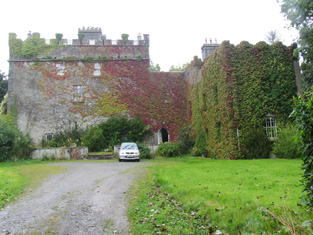
|
| Bellevue | Belview, Nenagh, was the residence of G.W. Biggs in 1814 and in 1837. The Ordnance Survey Name Books note that Thomas Sadlier was the proprietor of Bellevue inn 1840 but that it was the residence of J.W. Biggs and was " a commodious house". Samuel D. Biggs was the occupant at the time of Griffith's Valuation. He held the house valued at £30 with 315 acres from Thomas Sadlier. Samuel D. Biggs was still resident at Belview in the 1870s. Major Biggs lived at Bellevue in the 1940s. Bellevue is still extant. |
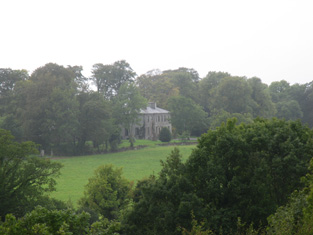
|
| Brookfield | D. Cambie is recorded as the proprietor of Brookfield, Nenagh in 1814. The Ordnance Survey Name Books refer to Brookfield as the residence of E. Talbot but "Couns. Geddy [Grady] was the proprietor. In the mid 19th century John Parker was resident, holding the property from Henry D. Grady. The Parkers and Gradys were related. The house was valued at £17 and is still in use as a residence. John Parker was still resident in the 1870s. John's only daughter, Annie, married William James Reeves in 1892 and their eldest son was Henry Parker Reeves. This family is documented in the archive at Damer House, Roscrea. |
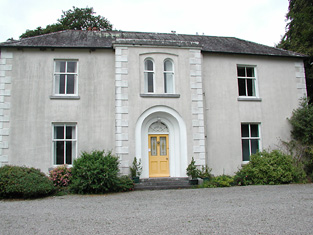
|
| Kilgarvan | Occupied by Mr Michael Connor in 1814 and by E. Cambie in 1837. Held by Solomon R. Cambie in fee at the time of Griffith's Valuation when the buildings were valued at £14.15 shillings. The Cambies sold Kilgarvan to the Reeves in the 1870s. This house is still extant and was for sale in 1999 and again in 2002. | |
| Waterloo Lodge | Located on the shore of Lough Derg the Reverend R.P. Vaughan was resident at Waterloo in 1837. The Ordnance Survey Name Books refer to it as his residence, "a neat cottage". Edward Biggs is recorded as the occupier in the mid 19th century, holding the property valued at £10 from Dr Malony. A building is still located at this site. | |
| Mota | This house dates from about 1800. Edward Cambie was resident at Mota in 1814 and T. Pepper Roberts in 1837 and afterwards. The Ornance Survvey Name Books mention that it was his residence in 1840 and that Thomas Sadlier was the proprietor. Mota and 478 acres, the estate of Theobald Pepper Roberts, was advertised for sale in May 1850. George Taylor occupied the house valued at £15.10 shillings in the mid 19th century. He held it from Peter Byrne. Marcus Tuthill lived here later. This house is still occupied. |

|
| Gurthalougha | A mid 19th century house [built by William D. Farrar], it is not marked on the first edition Ordnance Survey map or entered in Griffith's Valuation. In the 1870s William Dent Farrar was resident. William D. Ferrar was still the occupier in 1906 when the house was valued at £35. The Irish Tourist Association surveyor records Mr Kent as resident in the early 1940s. Owned by John Paul Getty III in the first decade of the 21st century and for sale in 2010 and again in 2012. |
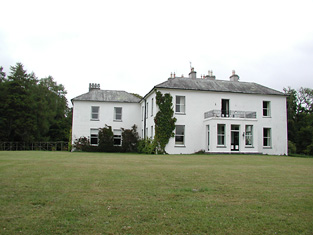
|
| Duniry B | Michael Derwin was leasing property valued at £7, including a mill, from Peter Blake at the time of Griffith's Valuation. A house still exists at the site. | |
| Brookville (Ballygowan) | Lewis records Brookville as the seat of Martin White in 1837. He was leasing the property from the Aylward estate at the time of Griffith's Valuation. The estate was "in Chancery" at the time when the buildings were valued at £7. A house still exists at the site. | |
| Crannagh House | There are references to a house owned by the Nugents at Crannagh in the eighteenth century but there is no substantial house shown on the First Edition Ordnance Survey map. Slater refers to "Crane" as the seat of Arthur Nugent in 1846. The townland is in Arthur Nugent's possession at the time of Griffith's Valuation but there is only a caretaker's house of nominal valuation. However, the 25-inch Ordnance Survey map of the 1890s shows a substantial building labelled Crannagh House. This property is no longer extant. |

